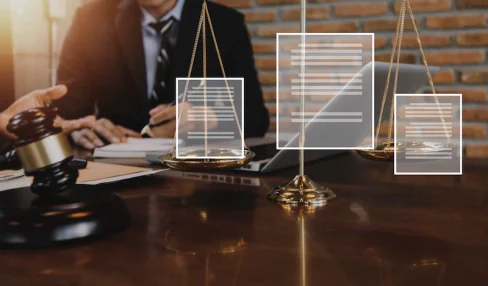A Simple Guide To Personal Injury Law: Understanding Your Rights
3 Mins Read
Published on: 20 December 2023
Last Updated on: 14 February 2025

toc impalement
If you have been hurt by someone else’s actions or their failure to act, understanding personal injury law is essential. When it comes to personal injury claims, the laws can get pretty complicated. This guide examines the subtle complexities of this legal field. It details the rights of victims and describes when, where and how to launch a personal injury claim.
Defining Personal Injury Law
Fundamentally, personal injury law is concerned with payment for damage caused by another’s act. Here, the damage can be physical, psychological, or financial. Such laws generally aim to restore the injured party to its original position.
Categories Of Personal Injury Cases
Such personal injury cases can arise from a variety of circumstances. Common types include:
Vehicle Accidents: injuries sustained in car, truck, or motorcycle collisions.
Medical Malpractice: When doctors act improperly, they inflict harm.
Workplace Injuries: Harm sustained while carrying out duties at work.
Slip and Fall: Accidents resulting from property safety flaws.
Defective Products: Harm from using faulty products.
If you’ve been involved in an accident involving public transportation, such as a bus or subway, consulting an MTA accident lawyer can help you navigate the unique complexities of these cases.
The Concept Of Negligence
Proving negligence is an important stage in personal injury cases. To establish this, it is important to meet four different criteria:
Duty: The defendant had a duty to act (or not act).
Breach: They did not carry out this duty.
Causation: The breach was directly responsible for the injury.
Damages: The damage caused by the breach was real.
Compensation In Personal Injury Cases
Compensation, or damages, in these cases, can be diverse, covering:
Medical Expenses: Current and future medical bills.
Lost Wages: Loss of income resulting from inability to work.
Pain and Suffering: Physical and emotional stress compensation.
Punitive Damages: In exceptional cases, they find their use in penalizing exceptionally damaging behavior.
How To File A Claim
The process starts with talking to a personal injury lawyer. They will assess your case and guide you through the following steps:
Investigation: Collecting evidence to back up your assertion.
Filing: Submitting your claim to the court.
Negotiation: Trying to settle with the other side.
Trial: If a settlement is not reached, the case may go to trial.
Statute Of Limitations: A Critical Timer
However, every country has a statute of limitations, which is a deadline for submitting claims for personal injuries. If you miss this date, you may forfeit your ability to file a complaint. Speed is, therefore, crucial.
Do-It-Yourself Vs. Hiring A Lawyer
Though some people try to handle their claims on their own, navigating the legal system can be frightening. Retaining an experienced attorney significantly increases the likelihood of a favorable outcome.
Conclusion: Empowerment Through Knowledge
In the area of personal injury litigation in particular, information truly is power. Please remember that the purpose of the law is to uphold order and defend your rights.
Through this guide, we’ve navigated the complex terrain of personal injury law. It may sound daunting at first, but if you understand your rights and the process, it can change the result of your case. Whichever way you choose to go, staying informed is necessary if you are to fight for your rights effectively.
Read Also:


















Comments Are Closed For This Article